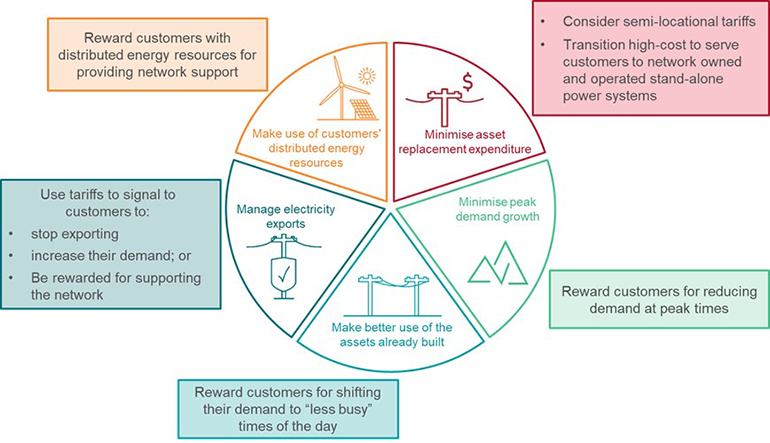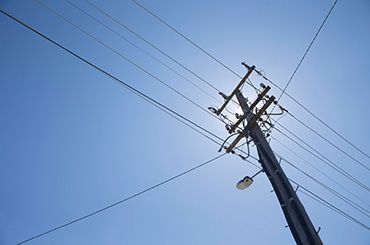
Our network experiences some problems, mainly because of how customers consume electricity and use our network in the modern day.

We could just keep investing to solve these problems, but this comes at a cost that all customers must pay for through their electricity bills. Adjusting and trialling new tariffs provides an alternative to investment – customers are provided with price signals as to how their electricity consumption is impacting network costs. Customers can then choose whether to respond – those that do will be rewarded with lower network charges.
Why managing electricity exports is important
Have you ever experienced flickering lights or a very brief loss of power (known as a brown out)? These are the result of power quality issues and occur when the network experiences very low or high voltages.
Networks have always managed power quality. Power quality is about making sure our network works within its technical (voltage) limits. We need the right voltage levels to avoid power quality issues that damage equipment or customers appliances with too much pressure or cause brown outs for those at the end of the line because there's not enough pressure.
Voltage levels are best likened to water pipes and water pressure. You need enough water pressure to deliver water to all the taps in different households but not so much pressure that the pipes burst. The same thing happens on our network
- the voltage, like the water pressure, can drop when everyone starts to use a lot of power at the same time or
- the voltage can rise if lots of people are exporting the power from their solar panels onto the network – just like the water pressure would increase if we pumped more water into the pipe.
With the increased take-up of new and emerging technologies, power quality issues are becoming more common across the network. Now, more than 25 percent of households and business connected to our network have solar panels, which means we now have hundreds of thousands of small generators connected to our network and this number and the size of the systems being connected, continues to grow.
The traditional approach to managing power quality has been to manually adjust the local network settings, but this only provides a temporary solution and is no longer an efficient solution to manage the growing number of power quality issues.
Tariffs provide another lever for managing power quality issues and our tariff trials include:
- a tariff that offers a low consumption price between 10am and 3pm, to encourage customers to use electricity at that time to help “soak up” the extra voltage in the network
- a tariff that:
- charges customers for their exports above a certain level between 10am and 3pm, when they create power quality issues for the network
- rewards customers for their exports into the network between 5pm and 8pm when they help with managing power quality issues caused by the high demand for electricity



